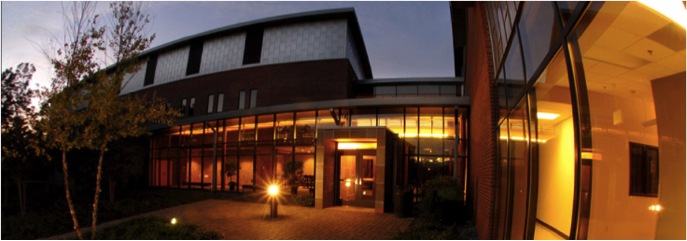ANIONIC POLYMERIZATION is a reaction in which a cationic initiator transfer charge to a monomer followed by a polymerization reaction with remaining monomers. A successive monomer addition result in the formation of active center of a negative ion associated with a positive counter ion. The center typically consists of active carbanion which carries the polymerization. One of the main advantages of living anionic addition polymerization is that it allows controlling structural and compositional features of a polymer. The type of solvents is dictated by the reactivity of the initiator and carbanion of the propagating chain end. This polymerization is commonly used in production of polydiene and styrene-butadiene rubbers as well as thermoplastic styrene-based elastomers.
CATIONIC POLYMERIZATION is a reaction in which a cationic initiator transfers charge to a monomer followed by a polymerization reaction with remaining monomers. A successive monomer addition result in the formation of active center of a positive ion associated with a negative counter ion. In cationic vinyl polymerization the initiator is cation which is attracted to carbon-carbon double bond. Typical cationic polymerization involves two types of monomers: olefins and heterocyclic monomers. These polymerizations are initiated by electrophilic molecules (for example, HBr, HCl, etc.), Also, Lewis acids (for example, AlCl3, SnCl4, BF3, TiCl4, AgClO4, and I2) which are electron acceptors as well as other molecules generating carbonium ions can initiate polymerization.
NITROXIDE-MEDIATED RADICAL POLYMERIZATION (NMP) uses alkoxyamines as initiators which form stable free radicals. NMP provides exceptional control over polymer structure and dispersity because nitroxide radicals are stable. This polymerization is driven by reversible deactivation of the propagating polymer radicals which combined with nitroxide radicals. The cleavage of the C-ON bond in alkoxyamine active sites at elevated temperatures results in the formation of carbon-centered radicals. Typically, two major reaction pathways enable this polymerization: (1) nitroxide radical recombination regenerating dormant alkoxyamine end-groups or (2) monomer addition to alkene groups extending the reactive chain by one monomer unit. The alter results in the formation of a new polymer radical which can again react with nitroxides or with monomers.
STEP-GROWTH POLYMERIZATION typically involves reactions of di- or multifunctional monomers to initially produce oligomers, which at high monomer conversion rates form high molecular weight polymers. Historically, this polymerization is also known as condensation polymerization because one of the byproducts can be water; for example, formation of polyesters results from reactions of diacid and dihydroxyl functional monomers to produce a polyester and water. Formation of polyurethanes proceeds as a step-growth process, but no small molecule by-products are generated.
FREE-RADICAL (STATISTICAL) POLYMERIZATION involves the successive addition of alkene monomers (C=C) initiated by free radicals resulting from the decomposition of thermal, photo, or redox initiators as well as other physical processes (ionization radiation, plasma, sonication). Typical polymerization process involves three steps: chain initiation, chain propagation, and chain termination. There are four commercial methods of radical polymerization: bulk (monomer and initiator only, no solvent), solution (monomer, initiator, solvent), suspension (aqueous phase, water-insoluble hydrophobic monomer, water-insoluble hydrophobic initiator soluble in monomer), and emulsion (aqueous phase, water-insoluble hydrophobic monomer, water-soluble hydrophilic initiator).
REVERSIBLE ADDITION-FRAGMENTATION CHAIN TRANSFER (RAFT) is living radical polymerization which requires the use of a molecule known as reversible chain transfer agent, for example dithio molecule). Critical components of RAFT are source of radicals, monomer, RAFT agent, and solvent. Typical monomers are (meth)acrylates, (meth)acrylamides, acrylonitrile, styrene and derivatives, butadiene, vinyl acetate and N-vinylpyrrolidone. Polymerization process involves initiation by the free radical source, propagation, RAFT pre-equilibrium, re-initiation, main RAFT equilibrium, and bi-radical termination to form unreactive chains.
ATOM TRANSFER RADICAL POLYMERIZATION (ATRP) is a controlled reversible-deactivation radical process in which the deactivation of the radicals involves reversible atom transfer or reversible group transfer typically catalyzed by transition metal complexes. Typical ATRP involves initiation, equilibrium with dormant species, and propagation, leading to the formation of a carbon-carbon bond with a transition metal catalyst. A wide variety of monomers with different chemical functionalities can be prepared and control of molecular weight, polymer composition, and copolymer topology while maintaining a low polydispersity are key advantages of ATRP. The presence of the halogen at the end of the polymer chain after polymerization allows further reactions thus enabling the formation of other reactive functional groups or other copolymer topologies.
HETEROGENEOUS RADICAL POLYMERIZATION (HRP) is kinetically controlled one-step polymerization of water-soluble and water-insoluble monomers to form ultra-high molecular weight amphiphilic block copolymers. The phase-separation and initiator-starvation conditions facilitate sequential polymerization of hydrophilic and hydrophobic monomers. As one monomer unit is copolymerized, the radical end become hydrophobic and phase separation occurs followed by diffusion of another monomer and subsequent copolymerization of a hydrophobic block. The unique feature of ultrahigh molecular weight block copolymers is their ability of self-assembling in various solvents.
ANIMATIONS
ANIONIC POLYMERIZATION
CATIONIC POLYMERIZATION
NMP
STEP-GROWTH POLYMERIZATION
FREE-RADICAL POLYMERIZATION
RAFT
ATRP
HRP
